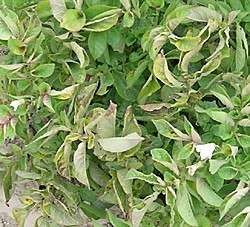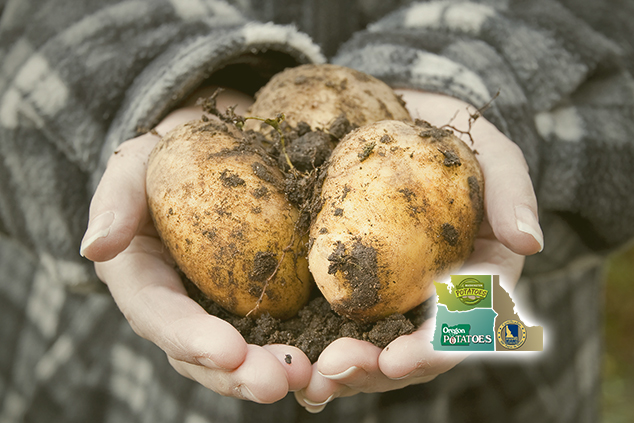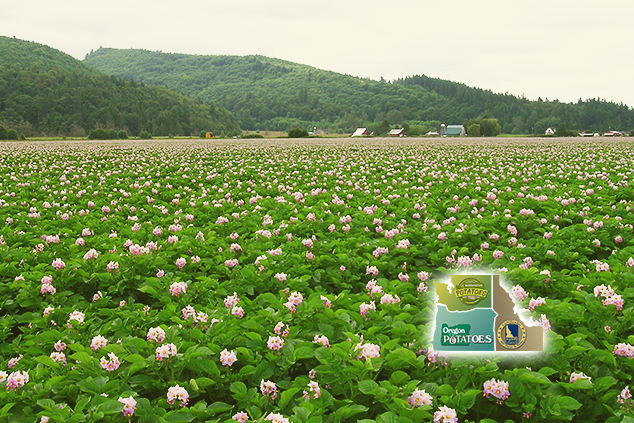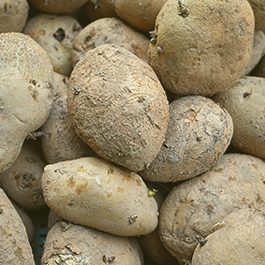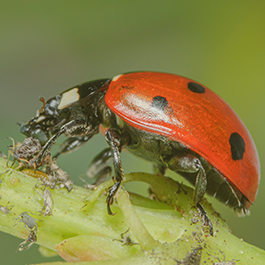Potato Leaf Roll Virus
General Information:
Potato leafroll virus (PLRV) was historically the most important insect-transmitted disease of Northwest potatoes. It is transmitted by certain aphid species, but primarily green peach aphid (Myzus persicae) in the Northwest. Symptoms include rolling and yellowing of leaves, and a stunted, upright growth habit. From a crop production perspective, the most important symptom is net necrosis, which occurs in the tubers of some varieties (especially Russet Burbank) under certain conditions. Net necrosis renders tubers un-usable in the fresh and processing market places.
Dispersal:
PLRV is transmitted by aphids in the mode known as “persistent circulative.” This means the virus lives inside the aphid, requires a latent period between acquisition and transmission, and that once infected, aphids transmit PLRV throughout their lives. The virus exists in potato seed stocks in very low percentages, and can also enter potato fields inside aphids that have fed on certain weeds that are PLRV hosts and on volunteer potatoes.
Management:
Management of PLRV has traditionally included
- purchasing clean seed, and
- aggressively controlling aphids.
Unlike the case of PVY, aphid control and aphid insecticides on foliage are effective PLRV management tools. The reason for this is that an aphid transmitting PLRV requires enough time to do so that insecticides are able to interrupt the process. Since the wide-spread adoption of at-plant neonicotinoids at planting in seed potato production, PLRV has been almost eliminated from the potato industry of the U.S. and Canada.

